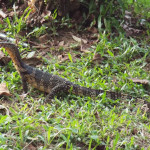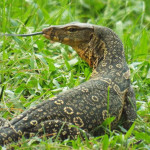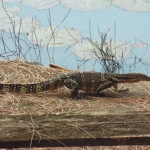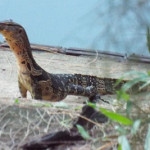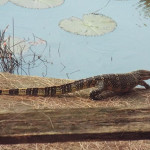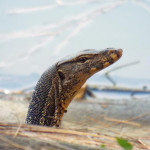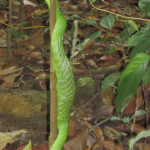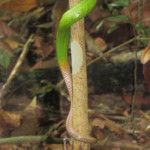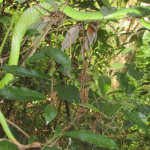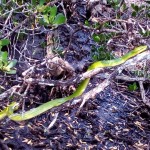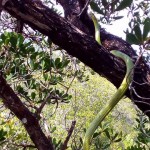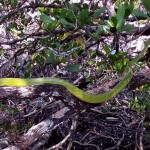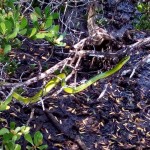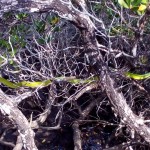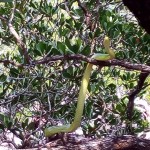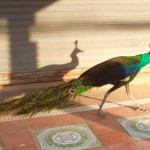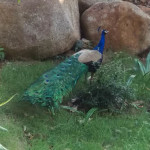Oriental Dwarf Kingfisher (Ceyx erithaca)
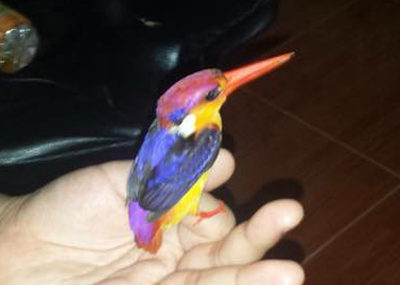
Image Copyright Stanley van Broekhuizen
Last Observed: February 2016 – Koh Chang
Last Observed By: Stanley van Broekhuizen
The tiny oriental dwarf kingfisher is one of the most attractive birds that you’ll see on Koh Chang or anywhere else for that matter. It grows to only around 13cm in length but has brilliantly shaded purple and yellow feathers and a bright red beak. Clearly camouflage isn’t its thing.
They live around small streams in densely shaded lowland forests.
They feed on geckoes, snails, crabs, frogs and various insect species.
Oriental Dwarf Kingfisher Wikipedia
Ochraceous Bulbul (Alophoixus ochraceous)
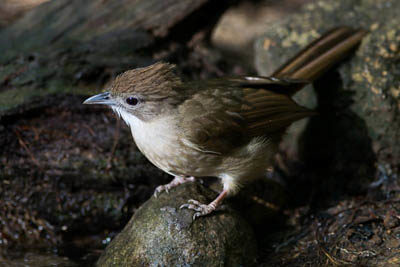
Image Copyright Suthanai Krupanitch
Last Observed: February 2016 – Koh Chang
Last Observed By: Suthanai Krupanitch
The ochraceous bulbul is a little brown bird. Specifically it is a Southeast Asian native little brown bird that is usally found in the mid levels of rainforests at up to 1,500 metres altitude.
No wonder it likes Koh Chang.
Ochraceous Bulbul Wikipedia
Banded Krait (Bangarus fasciatus)
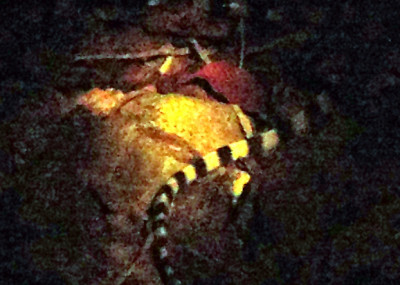
Image Copyright Paul Dunr 2015
Last Observed: November 2015
Observed By: Paul Dunn
The banded krait is a long (typically 1.8 metres) species of elapid snake found in India and Southeast Asia.
Banded kraits are a shy and timid species of snake that are mainly nocturnal. They are typically lethargic and non-aggressive even when confronted. You should still treat them with great respect though due to their highly toxic venom which contains many different neurotoxins.
There are very few recorded cases of banded krait bites on humans but they can be fatal (estimates range from 1% – 10% untreated mortality rates).
Banded kraits, like the king cobra, feed mainly on other snakes, particularly rat snakes and keelbacks, but they also feed on fish, frogs and skinks.
Banded Krait Wikipedia
Water Monitor (Varanus salvator)
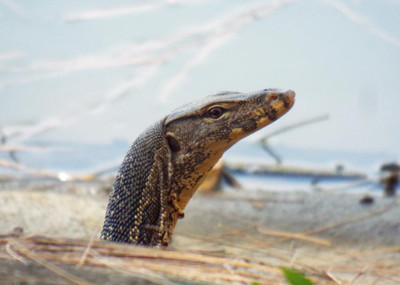
Image Copyright Sam Kettel
Observed: Koh Chang, January 2016
Observed By: Sam Kettel
The water monitor is a huge and relatively common lizard that is native to South and Southeast Asia. As the name suggests their habitat is in or around areas close to water.
Typical adult lenghts of these lizards range from 1.5 to 2 metres long but the longest specimen ever recorded was a huge 3.21 metres.
They are the world’s second largest species of lizard after their giant relatives the Komodo Dragon.
Water monitors are strong swimmers and their diet is a combination of land and aquatic life including fish, frogs, rodents, turtles, snakes, eggs and even young crocodiles.
Water Monitors are not overall an endangered despite a market for their skins but their range has been dramatically reduced by destruction of habitat, particularly in mainland India.
Water Monitor Wikipedia
Image Copyright Sam Kettel
Image Copyright Sam Kettel
Image Copyright Sam Kettel
Image Copyright Sam Kettel
Image Copyright Sam Kettel
Image Copyright Sam Kettel
Domestic Dog (Canis Familiaris)
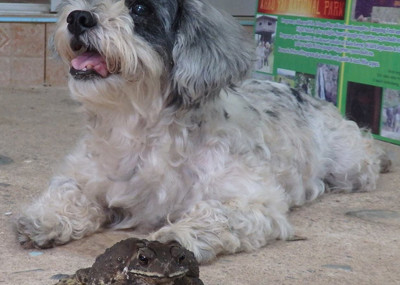
Image Copyright Jean-Pierre Odet
Observed: Koh Chang, April 2016
Observed By: Jean-Pierre Odet, Everyone!
Koh C
hang has a large population of man’s best friend. Sadly man isn’t always the best friend he could be to Koh Chang’s dogs and many live wild and uncared for. These “wild” dogs, as well as having pretty sad lives, have an effect on local native wildlife populations, although by and large they are more scavengers than hunters.
In case of any uncertainty the dog is the animal in the background of the picture.
Why are there so many uncared for dogs on Koh Chang? There’s very little desire from many dog owners to de-sex their pets so unwanted litters are often born and left to fend for themselves. Disease is rife and rabies exists in Thailand remember so approach any wild dogs with care.
Thankfully there are some people on the island making efforts to improve the lives of these unwanted pets. Find out more below and feel free to volunteer resouces and help.
Koh Chang Animal Project (Foundation)
Happy Dogs Koh Chang
Dog Wikipedia
Cat (Felis catus)
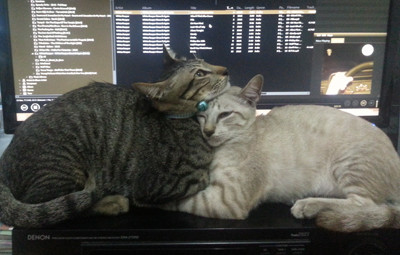
Image: Dave Hinchliffe
Observed: Koh Chang, April 2016
Observed By: Dave Hinchliffe, Everyone!
So obviously there’s loads and loads of cats on Koh Chang. They are the world’s most popular pet and live everywhere where there are people.
However all cats retain a large part of their wild cat roots – even those two pictured – and any cat that doesn’t have extensive exposure to humans in their first eight weeks will become feral and seek to avoid people.
they are accomplished hunters despite their scrounging expertise and are more than capable of fending for themselves. Feral and domestic cats have become a significant predator in Koh Chang, feeding on lizards, snakes, birds and small mammals. It is interesting to speculate whether they are responsible for threatening the survival of any indiginous species. Probably, although even the wild cats seem to prefer to scavenge on the margins of human development rather than deep in the junge where plenty of things will be more than happy to feed on them.
Cat Wikipedia
Silvery Langur (Trachypithecus cristatus)
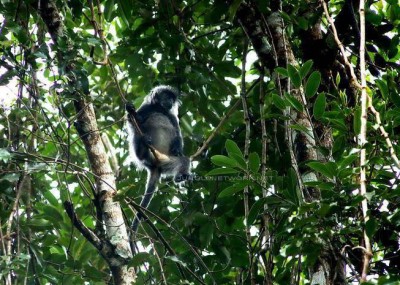
Image Copyright Suthanai Krupanich
Last Observed: Koh Chang, January 2016
Observed By: Suthanai Krupanich
The silvery langur is an arboreal (tree dwelling) primate native to Peninsular Malaysia, Sumatra and Bornea (according to Wikipedia), and Koh Chang (as this photo shows).
It is also known as the silvery lutung or the silvered leaf monkey.
It’s coat is dark brown or black with distinctive silvery grey tips. It is a herbivore and has a unique three-chambered stomach that allows it to digest the cellulose in its diet in a similar way to the four chambered stomach of cows. In fact pretty much all it eats is leaves and it has specialised to inhabit the middle canopy of forests, leaving the upper layers to fruit eating primates.
The silvery langur is not yet endangered but you will be very lucky to spot one on Koh Chang. Unlike it’s enterprising cousin the crab-eating macaque it stays deep in the protection of the jungle.
Silvery Langur Wikipedia
Red-Tailed Racer (Gonyosoma oxycephalum)
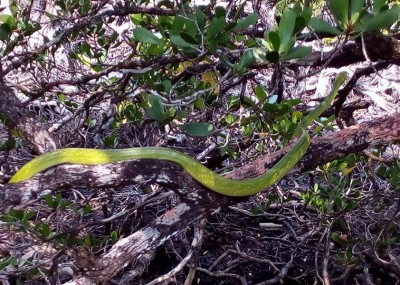
Image Copyright Teerasak Thomas Suamcheepmasau
Last Observed: Jan 2016, Koh Chang
Observed By: Teerasak Thomas Suancheepmasau,Paul Dunn
The red-tailed racer is a species of ratsnake native to Koh Chang. It is also known as the red-tailed green ratsnake but red-tailed racer is way cooler so that’s what we’ll call it here.
This is a large and powerful snake. The female is larger than the male and can reach lengths of up to 2.8 metres. They live up to 20 years in captivity.
They live in trees and seldom come to ground. They feed almost exclusively on birds, bird eggs and bats, which they catch in mid-flight whilst hanging from branches.
They are a non-venomous snake but can still be aggressive and give a nasty bite.
Red-Tailed Racer Wikipedia
Image Copyright Paul Dunn
Image Copyright Teerasak Thomas Suamcheepmasau
Blue Peafowl (Pavo cristatus)
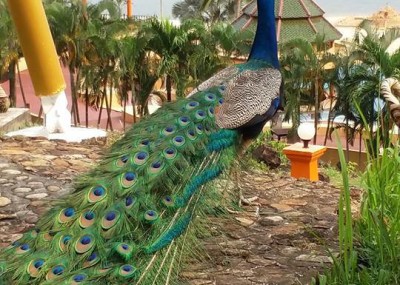
Oksana Babchenko
Last Observed: January 2016 – Koh Chang
Last Observed By: Oksana Babchenko, James perkins, Moni Von Bauer
The Blue or Indian Peafowl is easily distinguished from its close relative the green peafowl because the male is blue and not green. Given some of the identification challenges you come across this is an absolute walk in the park.
We all call them peacocks but that term strictly only applies to the male, the female being a peahen and the species as whole being called peafowl.
Anyway they are surely one of the world’s best known, beautiful and most distinctive birds and you probably know all about them already. But for those who don’t it is the male of the species that has the huge fan of bright feathers which it uses for display to attract a mate.The female is acomparatively drab brown and white colour.
Koh Chang has quite a few peafowl and it isn’t clear, to me at least, whether they are native to the island or have been brought in to decorate resorts such as Chang Park in Kai Bae. Whatever the fact they are native to this part of the world and are quite comfortable with Koh Chang as a habitat.
Blue Peafowl Wikipedia
Image Copyright James Perkins
Image Copyright Moni Von Bauer
Pacific Swallow (Hirundo tahitica)
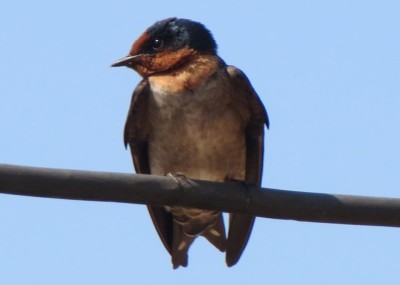
Image: Dave Hinchliffe

Image Copyright Gerardo Messere
Last Observed: April 2016 – Koh Chang
Last Observed By: Gerardo Messere, Dave Hinchliffe
The Pacific Swallow is a small member of the swallow family that breeds in south and southeast Asia and the South Pacific.
It grows only to about 13cm in length and has a blue and greay back and wings and a red throat.
Like other swallows it is a fast flier and feeds on insects whilst in the air.
Pacific Swallow Wikipedia





